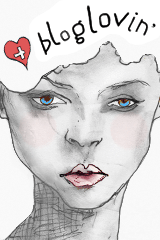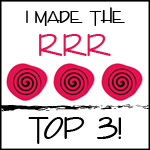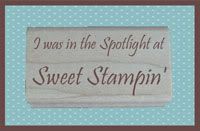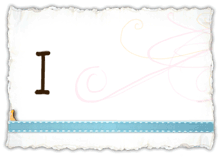As part of being a Design Team member for Two Scrapbook Friends, one of our responsibilities during our term, is to produce a three part special blog feature, tackling something scrapbook or card related. Now this should obviously be something we might excell in, or have a talent for, or something we feel passionate about.
I am relying on the latter option here. I certainly don't claim to be any kind of expert in the colouring field.......I have never taken a class, or become certified, not that I wouldn't want to, I just colour because.....well .....I love it!
So straight off the bat, there is my big disclaimer.
Everything I'm going to share with you today is what I've learnt from magazines, or scouring the internet, and most importantly, colouring. So if nothing else, after reading this feature today, I hope you will at least be encouraged to pick up a marker and colour.
On with the show..........
Copic's! Does that one word get your heart pumping with excitement at the thought of colouring up your next image? Or guilt when you think of your rather large collection, gathering dust, just waiting to be used?
If it's the former....great, jump right in! If it's the latter, I hope as we progress, you'll at least feel a little less intimidated, and a little more inclined to give them a try. I hate to bust a myth here, but colouring with Copic's doesn't have to be that difficult. I'm not saying it's easy, and you will certainly need to practice to improve your technique. I'm still learning two years down the road, but that's the point that leads me nicely to my first tip -
#1 PRACTICE
The most valuable tool for improvement, in colouring with Copic's is to practice.....the more you colour, the better you will become, this I will pretty much guarantee. Copic markers are certainly not your 'Crayola' variety (not that I have anything against these....my kids love them!).
They have a very fine nib, which is perfect for colouring detailed images, but requires a certain control. It makes sense therefore, that the more you become comfortable with the feel of them ie. practice, the better you'll be able to control exactly what you want them to do.
Now if you are a beginner in the colouring world, I wouldn't suggest you run out and buy 50 markers, because you feel you need them. Once you jump into this hobby, there's a distinct possibilty you will become 'hooked' and there will be plenty of opportunity to add (and add, and add) to your collection as you progress. Here lies my second tip -
#2 THINK ABOUT WHAT YOU ARE GOING TO COLOUR AND PURCHASE FROM THERE.
If you like the look of cutesy girl/boy images, you'll obviously need a good variety of flesh tones, together with a small selection for clothing etc. If you are interested in colouring landscapes, these will be of no use whatsoever.....common sense right? When choosing any colour, to begin I would suggest purchasing at least two shades which are grouped relatively close on the Copic chart. You can download your own free copy of this chart from the Copic web site - there's a link on the sidebar of the Two Scrapbook Friends blog.
As far as choosing images to colour, your options are endless, but generally, they are available in two forms......'stamps', the rubber/acrylic hold it in your hand variety, or 'digital', printed using your computer.
A couple of things to be aware of when choosing between the two. If you are stamping, I would recommend using Momento ink pads as they are a water based ink that is fast drying, and that's the key. The last thing you want is for the tip of your marker to pick up any ink residue, which then results in a discoloured nib and one very smeared, ruined image.
If you are printing digitally, then every brand of ink cartridge is different and it becomes more a case of 'trial and error'. However, as a general rule of thumb, when colouring, I would always avoid touching the lines of your image, with the tip of your marker, as much as possible, in order to avoid disaster.
Before we get to the fun part (colouring!), there's one final thing we need to mention, and that is what you are actually going to colour on, so here comes my next tip -
#3 USE A REALLY GOOD QUALITY CARDSTOCK.
A key factor in achieving good shading whilst colouring, is saturation......the density of colour. In order to achieve this with Copic's, we need to layer.....lots, and therefore a really good quality cardstock is required to be able to withstand this amount of ink. By looking at the reverse of a coloured image, you should see the ink has absorbed right through, and this is what we want, as it confirms the density of ink layers on there. Two Scrapbook Friends carry an awesome, super smooth cardstock, specifically designed for colouring with Copic markers, and you will certainly notice the difference when using this. Believe me, I have tested many!
OK, I'm sure by now you're tired of reading and would like to get down to the business of colouring. Before we do, I have one final tip which is again pretty much common sense, but designed to make life easier -
#4 WHEN COLOURING AN IMAGE, CHOOSE YOUR PAPERS FIRST, THEN COLOUR TO THIS SCHEME.
This really does take all the hard work out of deciding which tones to use. Let's face it, the colour combinations on patterned papers have already been tried and tested before going to print, so we know they work, and the end result is a card/scrapbook page which co-ordinates beautifully with your coloured image.
Well, I can't end today's feature without actually 'colouring', so I thought for this first session we would look at colouring 'skin'. The images I'm using in all my examples are rubber stamps from Whipper Snapper Designs, which you can of course find in the store, and are extremely cute!
Before I lay down any ink to paper, I decide on my light source. This is the direction from which light is appearing, because generally this will determine where most of my shading will appear. You can see from this photo that I've decided upon the top right corner, and therefore will shade mostly down the left side and lower edges of the image.
When colouring anything, I always start with the lightest shade of the colour I've chosen, and progress by layering with darker tones. For this image, I've started by covering all skin areas with E0000, my lightest shade. I then start to layer by using a slighter darker tone (E000), on the areas denoted in the previous picture. It's quite difficult to pick up these lighter tones with the camera, so I've shown this in pink to make it clear where the shading is.
I then move to my third darkest shade (E00) and following the same pattern, colour approximately half way over my previously layer.
The idea is to draw each layer a little closer to the outer edge of the image. To make this clear, I've shown where my third layer is in pencil.
Finally, I use my fourth shade (YR00) and pretty much colour around the outer edge.
Generally whilst colouring, you'll be able to blend, and even correct minor errors in shading, as long as you start with the lighter tones and progress - the 'less is more' theory. I quite often do a final blending of all the layers, by using my lightest shade of marker as my final layer, and covering the whole area. This generally blends or smoothes out these layers, especially if they appear too severe. Before I do that here though, I'd like to create a little 'blush'.
I start with RV000 in a circular motion on the cheek area, and carry this out a little toward the ears. I then very lightly layer a little RV10 in a more centered area, over top.
Now is when I would cover the whole area (if needed) with a layer of E0000 to ensure everythings blended smoothly.
As far as colouring the diaper and bow, I followed the same principal as before.....start by covering the whole area with the lightest shade (RV000), then layer with the darker shades RV10 and RV23, in areas where shadowing would be. The photographs should clarify their location.
Remember, if you are not entirely happy with the blending of layers, take your lightest shade, and cover the whole area. You can always re-apply the darker shades as necessary.
Other than a little grey (C0) added on the ground to create shadow, the image is finished and ready for a card.
Well I hope you've managed to stick with me till the very end!
For my next feature, we'll be taking the basic foundations we've covered today, in order to jump right in to everyone's favourite task.......colouring hair! I do hope you'll join me, but in the mean time practice, practice, practice and most importantly, have fun!
Till next time,
Jayne.x.
Your Next Stamp DT Dare - Paint The Town Red
9 years ago

































































4 comments:
Thanks so much for this Jayne! I bought my first Copics last week and decided to buy some suitable for colouring skin to start off with. Hair will come next, lol!
Gorgeous card too!
xx
Awesome tutorial Jayne! You are a colouring queen :)
Thanks for sharing your wonderful talents Jayne!
I love this tutorial, Jayne! It really explains the method in very easy terms for those of us who are old or new at using Copics. I really look forward to the next ones...soon I hope! Thanks for all the hard work you put into this...we all really appreciate it!
Post a Comment